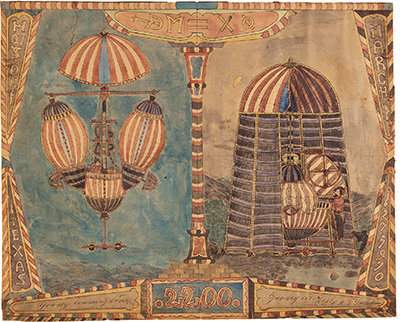Suzanne Weaver, photo by Kevin Todora, courtesy San Antonio Museum of Art.

Laura A. L. Wellen interviews Suzanne Weaver, newly appointed Brown Foundation Curator of Modern and Contemporary Art at San Antonio Museum of Art, about the distinct offerings of the museum collection, her Texas roots, and raising the bar for collaboration and creativity. Weaver previously served as the Interim Director of the Institute of Contemporary Art, Miami, and hits the ground running in San Antonio.
A+C TX: The San Antonio Museum of Art offers a kind of encyclopedic collection weighted with 18th and 19th century models for understanding the world. What does an encyclopedic museum offer to its patrons today? What keeps it relevant and thriving in 2016?
SUZANNE WEAVER: Contemporary art is not made in a vacuum. It comes from a long history of art making: Images, ideas, materials, techniques and processes transcend time, place and culture. Through creative and strategic collection building, exhibition planning, and innovative programming, contemporary art can provide an exciting and experimental platform in which to energize other collections, from Antiquities to 18th and 19th Century American Art, and can beautifully illustrate man’s need to create and connect to others, whether in the spiritual or physical realms.
The transition to a new position is obviously a moment to observe, learn, and plan for the future. I know you’ve just arrived, but can you share your ideas about new initiatives or projects?
My new initiatives and projects are not yet fully formed in the way of budgets, schedules, and artists—but I pretty much hit the ground running. Three main initiatives on the front burner: a major exhibition of artists working in Mexico City during San Antonio’s Tricentennial Celebration in 2018; a project series of small exhibitions of new work by international emerging or under-recognized artists similar to DMA’s Concentrations series; and a new plan and goals for building the collection.
Can you share some of your ideas for building SAMA’s collection of modern and contemporary art?
I’ve just begun to look at the collection. Developing a museum collection plan and establishing acquisition goals takes time and includes research, learning about the market for certain artists, and discussions with the Director, Chief Curator, and Board. The collections at the Speed Museum and SAMA are similar, whereas the Dallas Museum of Art has major works of Abstract Expressionism, Minimalism, and Post-Minimalism/Process as well as works by the most important and influential artists since the 1960s. In other words, the DMA can tell the well-known narrative of modern and contemporary art. SAMA cannot offer the classic tale, but it does have assets and the potential to tell a unique, worthwhile and meaningful story of art.

In many ways this strikes me as a unique advantage. It means you can look to unexpected places, can develop other narratives, and can mine other histories that maybe haven’t been included in many established museum collections. Can you describe ways that the SAMA is already creating a unique story?
A terrific surprise in my preliminary review of the collection is SAMA’s extensive holdings of two self-taught artists who worked in Texas, for example Charles A.A. Dellschau and Eddie Arning. We also have lovely works by Bill Traylor and John Willard Banks. The Museum is well known for its Nelson A. Rockefeller Center for Latin American Art, which contains an important collection of Spanish folk art from the eighteenth, nineteenth and twentieth centuries. With its holdings and potential for growth, SAMA is in a unique position to present a narrative of art that is outside the mainstream art world or traditional museum context.
You have long roots in Texas from your time at University of North Texas, at the DMA, and as an independent curator in Dallas. Do you have any previous connections with San Antonio? How does it feel to return to Texas? Any surprises?
I am thrilled to be back in Texas and especially San Antonio. I have come here all my life, so it feels like I am coming home. My father’s mother is from San Antonio (there’s a high school here named after my great uncle Dillard McCollum); my father was born in Luling (home of the Watermelon Thump and best barbeque in the State). When I became a curator, I came to San Antonio to visit Linda Pace, attend events at Artpace, and have studio visits with local artists. The biggest surprise is the dynamic growth of the city and the increase of ambitious, sophisticated, and international leaders, tastemakers and stakeholders involved in the planning and future of the city. And I love the Pearl Brewery area and all the new fabulous restaurants.
San Antonio has such a dynamic contemporary art scene. And how do you see your work at SAMA as part of the arts ecosystem in that city?
I would like to offer a call to action. We are at a pivotal moment both in the history of the city and its artistic, intellectual, and cultural community. Many of our institutions have been around for decades. Like a collection plan, we need to look at our assets and consider our potential. The only way the “rising tide can lift all boats” is to care about the health and future of our all institutions and talented people. I am a firm believer in respecting our past and history, but I am committed to collaborating with others, not only to raise the intellectual and artistic conversations, but also to make real and lasting changes. Move forward.
— LAURA WELLEN

